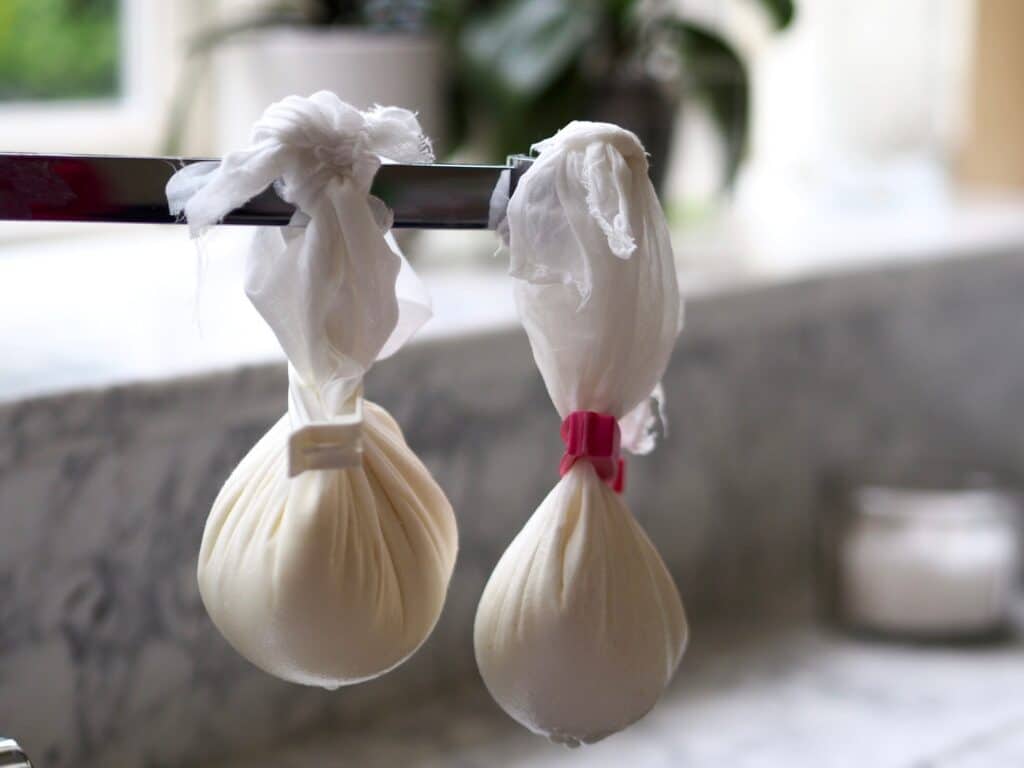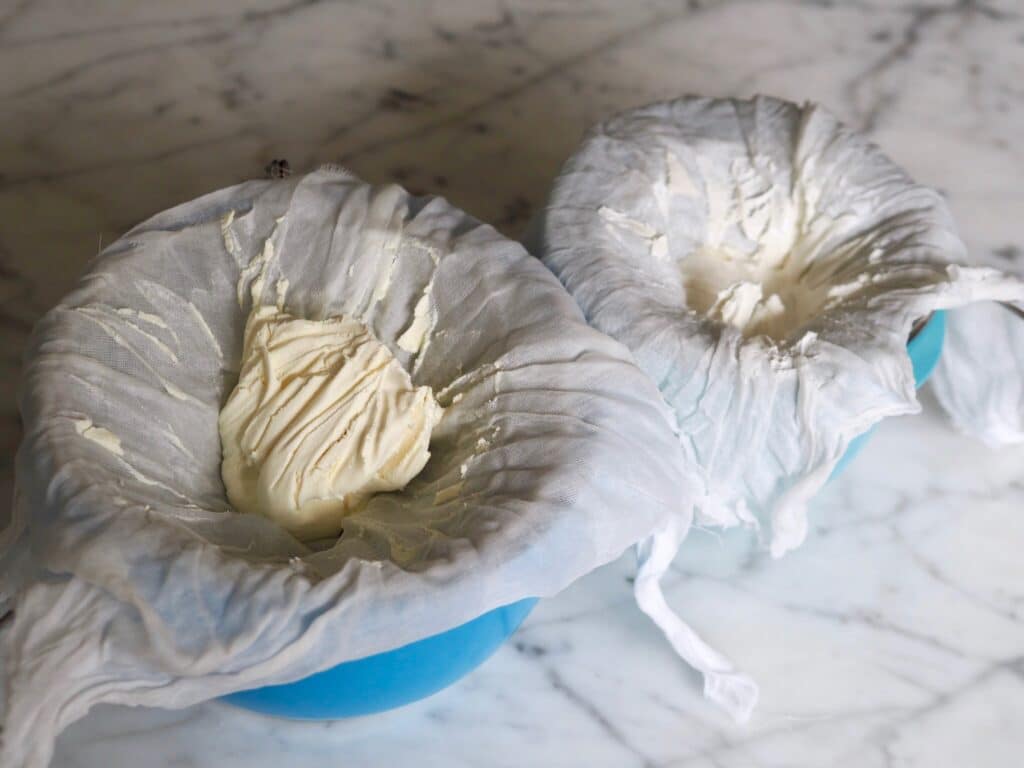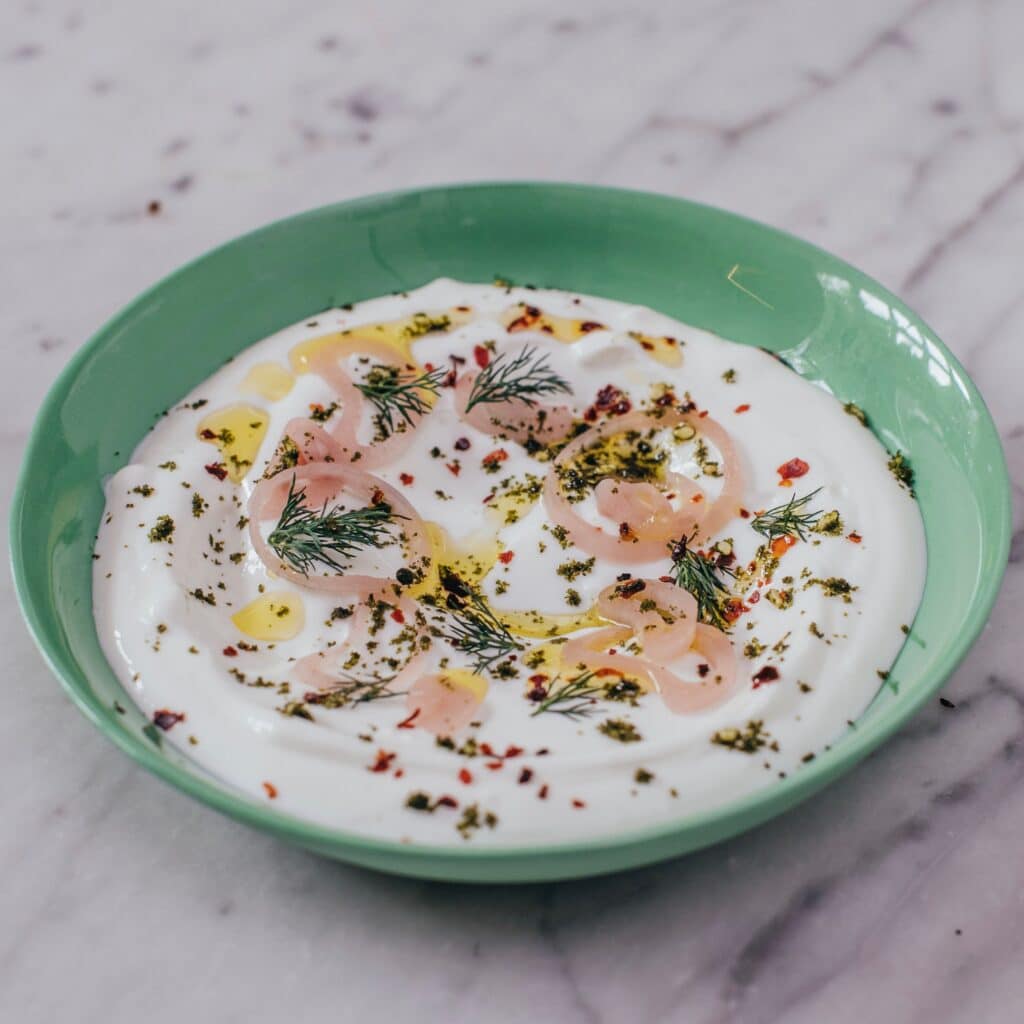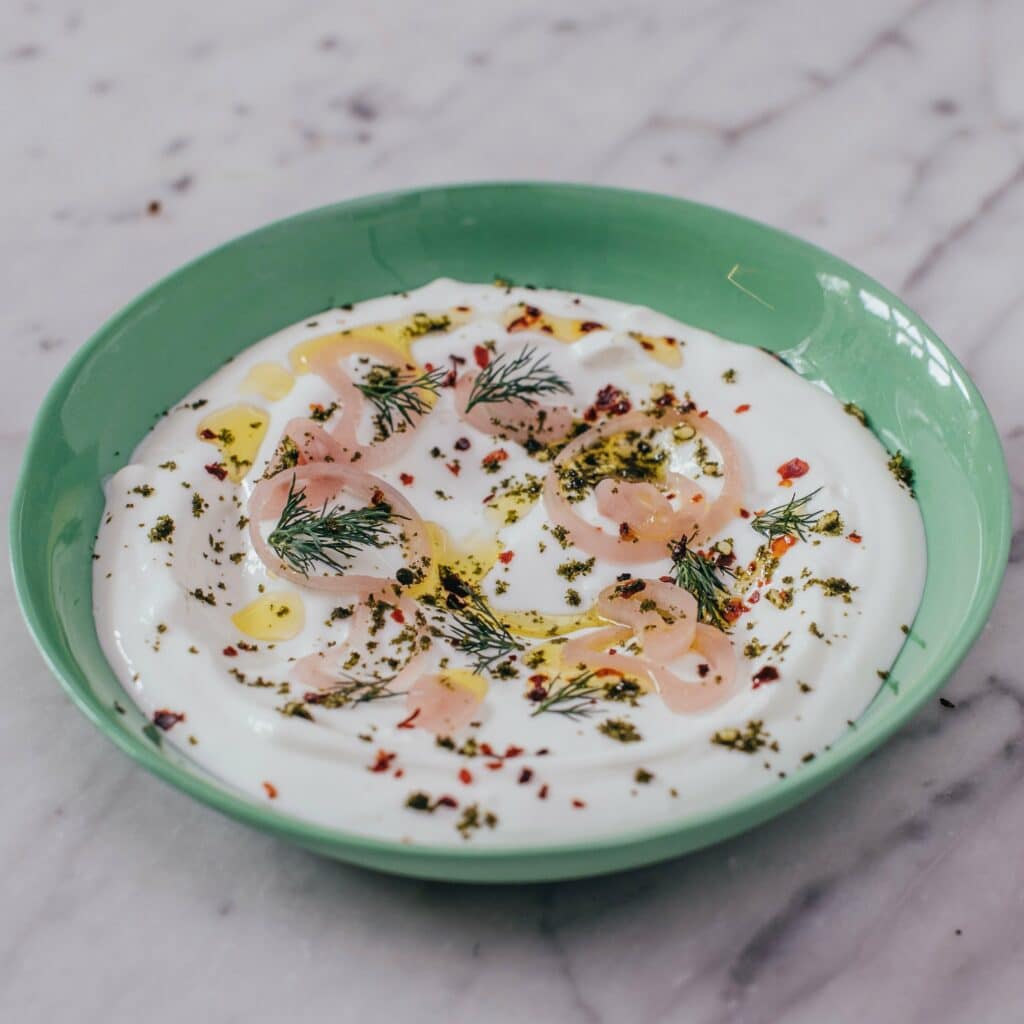I should explain: labeneh is strained salted yoghurt that you hang in a cheesecloth overnight rendering a thick, creamy and totally delicious dip, eaten alone or alongside cooked or raw vegetables, with cool watermelon or strawberries in the summer, on crackers or toast, in a sandwich……in fact with everything. I eat it with salad and eggs for breakfast, with grilled vegetables and fish or my favourite way as a little snack with some lavosh crackers or radishes. And, being a dish originating from the Middle East, there are as many varieties as there are regions.
Assuming it was too much of a faff to make at home and finding the shop bought version generally disappointing, labeneh was relegated to that special place in my culinary heart as consumed only on holidays in the Med or Israel or at any of my favourite Middle Eastern hangouts now on my doorstep in London. But in this year of overcoming fears and challenging myself, I accepted the task of tackling what turns out to be an extremely simple delicacy to execute. The result: labeneh is now an unexpected and greatly appreciated notch on my cooking belt, and a fridge staple.
I should add here, the testing process was quite extensive. After gathering many opinions from those I know, and asking those I don’t know on Instagram for their favourite labeneh recipe, I made versions with Greek yoghurt, plain yoghurt, goat’s milk yoghurt and sheep’s milk yoghurt, and with combinations of up to two at a time trying to achieve the ultimate condiment of my dreams. Each variety has a slightly different flavour and consistency, but the sheep’s milk version won my vote overall as it has a milder flavour and the perfect texture.



Give it a try. It’s really not as hard as it looks.
Note: While sheep’s milk yoghurt is my favourite base for labeneh, a 50/50 goats milk Greek yoghurt mix is a close second place, but feel free to make this with your favourite yoghurt of choice. Just make sure it is not set or low fat.
Labeneh
- 500g sheep’s milk yoghurt (or any other yoghurt of choice)
- 1 tbsp lemon juice
- 1 tsp salt
Stir together all the ingredients in a medium sized bowl.
Drape a large (approximately 40cm/16inch) square of doubled cheesecloth or muslin over a sieve in the sink and pour the yoghurt mixture into the middle.
Bring together the sides of the cloth and tie together to make a cute bundle.
Hang the bundle overnight.
I hang mine from my kitchen tap and let it drain into the sink, but you can hang it by tying it over the handle of a wooden spoon balanced over a mixing bowl.
I leave the mixture out overnight and then transfer to a colander sitting over a bowl and place in the fridge for another few hours to chill.
I like to give it 24 hours hanging time total. Some people hang theirs in the fridge for the full 24 hours.
Either works, although I prefer the flavour when left out overnight before going in the fridge.
If you like a dip (my personal favourite), open up the cloth after 24 hours and scrape the thickened mixture either in to an airtight container and leave in the fridge ready to use any time for up to a week.
You can leave it hanging for a few days in the fridge, giving you a stiffer mixture perfect for rolling into balls for a salad or a buffet selection.
Alternatively, transfer to a shallow bowl or plate, drizzle with a good slug of olive oil and any toping of your choice, and dip or spread away.
Optional toppings: good drizzle of olive oil zatar nigella seeds chilli flakes fresh herbs – chopped dill, coriander, parsley pickled shallots, pomegranate seeds
Enjoy!
Have you made this dish?
Let me know what you think, share your efforts and any tweaks you made to the recipe on Instagram, don’t forget to tag #BuildingFeasts or email me on info@buildingfeasts.com
